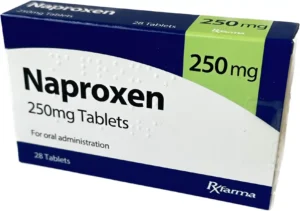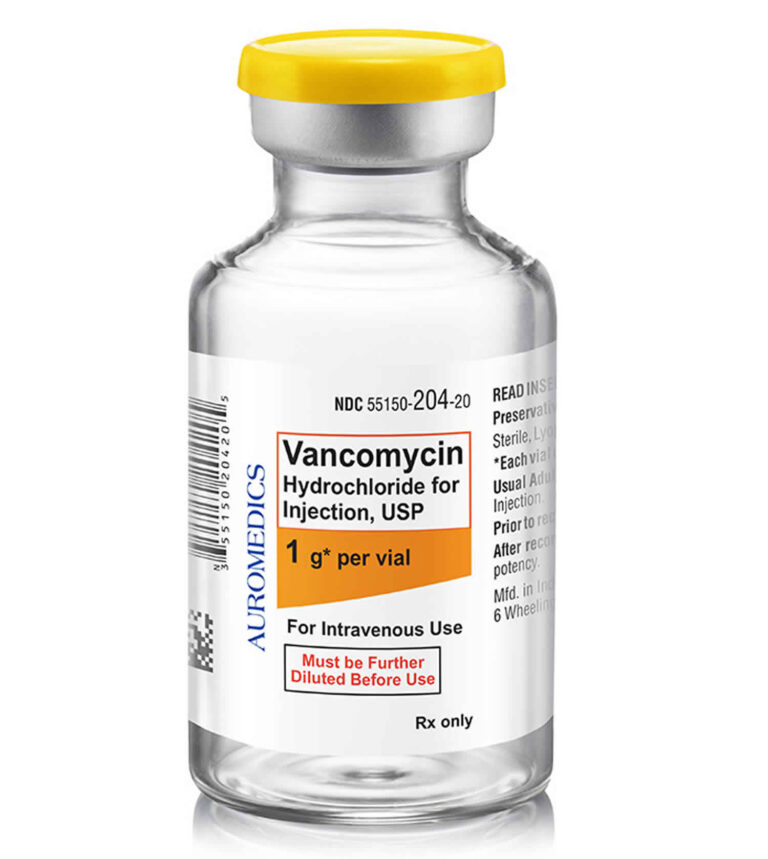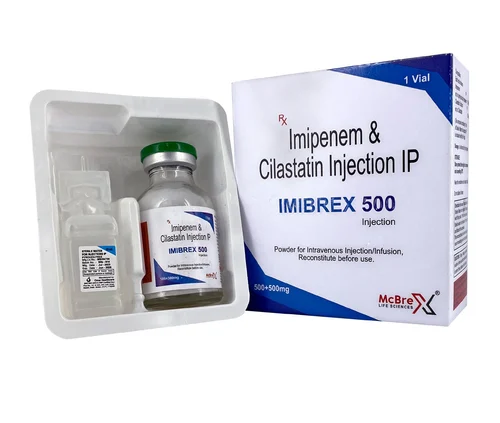
Naproxen sodium is a nonsteroidal anti-inflammatory drug (NSAID) used for relieving pain, reducing inflammation, and managing symptoms of various conditions like arthritis. It is available over the counter (OTC) and also by prescription.
Chemical Composition & Properties
- Generic Name: Naproxen sodium
- Chemical Formula: C14H13NaO3
- Molecular Weight: 252.24 g/mol
- Drug Class: NSAID (Nonsteroidal Anti-Inflammatory Drug)
- Solubility: Soluble in water, slightly soluble in alcohol
Naproxen sodium is the sodium salt of naproxen, which is a compound in the propionic acid class of NSAIDs. Its absorption increases when taken orally due to the presence of sodium salt in the formulation.
Mechanism of Action
Naproxen sodium inhibits cyclooxygenase (COX) enzymes to produce its effect. There are two forms of COX—COX-1 and COX. Both are responsible for producing prostaglandins. Prostaglandins are chemicals that promote inflammation, pain, and fever. Naproxen inhibits these enzymes and reduces the production of prostaglandins, thus alleviating pain and inflammation.
Uses of Naproxen Sodium
Naproxen sodium is indicated for the treatment of:
- Pain Management
It is effective for mild to moderate pain, including headaches, dental pain, muscle pain, back pain, and menstrual cramps.
- Arthritis
Used in managing osteoarthritis, rheumatoid arthritis, and juvenile arthritis.
- Inflammatory Conditions
Conditions such as tendinitis, bursitis, and gout can benefit from naproxen’s anti-inflammatory properties.
- Fever Reduction
Used for fever control in various infections and conditions.
Dosage and Administration
- Adults:
- For Pain Relief, administer 220 mg every 8-12 hours, with a maximum of 1,250 mg per day for short-term use.
- For Arthritis, administer 250-500 mg twice daily.
- Children:
- For children, the Dose depends on age, weight, and condition. Hence, consult with a pediatrician for proper guidance.
Take this medication with food to minimize gastrointestinal irritation. Don’t crush or chew the extended-release tablets.
Pharmacokinetics
Naproxen sodium is rapidly absorbed, with peak plasma concentrations occurring within 2-4 hours after oral administration. It binds extensively (approximately 99%) to plasma proteins, primarily albumin. Metabolized in the liver via cytochrome P450 enzymes (mainly CYP2C9). The half-life of naproxen sodium is approximately 12 to 17 hours, allowing for twice-daily dosing. Excreted primarily in the urine, with a small fraction in feces.
Side Effects of Naproxen Sodium
it can cause several side effects. However, it’s well tolerated.
- Nausea, vomiting, indigestion, stomach ulcers, and gastrointestinal bleeding.
- An increased risk of heart attack, stroke, and hypertension with prolonged use.
- Potential kidney damage, particularly in patients with pre-existing renal conditions.
- Headaches, dizziness, and tinnitus.
- Skin rashes, respiratory issues, or anaphylaxis.
Contraindications of Naproxen Sodium
- peptic ulcers, gastrointestinal bleeding, or other GI issues.
- individuals with significant heart disease or a history of stroke due to increased risk of cardiovascular events.
- individuals with kidney disease.
- Don’t use in the third trimester as it can cause fetal harm.
Drug Interactions of Naproxen Sodium
- the risk of bleeding increases when using with anticoagulants (e.g., warfarin),
- May reduce the effectiveness of Antihypertensive Medications
- Can Increase the risk of lithium toxicity.
- It can increase the levels of methotrexate, increasing the risk of toxicity.
Patients should inform their healthcare providers of all medications they are currently taking to avoid potential interactions.
Precautions and Warnings while using Naproxen Sodium
- Long-term use can lead to gastrointestinal bleeding kidney, or liver damage, especially at high doses.
- Older adults are at increased risk of adverse cardiovascular and gastrointestinal effects.
- Patients with asthma or allergies to aspirin may have an increased risk of respiratory reactions.
- Alcohol Consumption- Excessive alcohol use increases the risk of gastrointestinal bleeding.
Overdose Management
An overdose of naproxen sodium can result in symptoms such as drowsiness, nausea, gastrointestinal bleeding, and renal failure. Immediate medical attention is required. Treatment may include gastric lavage, activated charcoal, and supportive care. Dialysis may be necessary in severe cases.
Popular Brand Names of Naproxen Sodium
| Brand Name | Strength | Dosage Form | Manufacturer |
| Aleve | 220 mg | Tablet | Bayer |
| Naprosyn | 250 mg | Tablet | Roche |
| Anaprox | 550 mg | Tablet | Horizon Therapeutics |
| EC-Naprosyn | 375 mg | Enteric-coated tablet | Roche |
| Naprelan | 500 mg | Extended-release tablet | Avion Pharmaceuticals |
| Midol | 200 mg | Tablet | Bayer |
Patient Education
- Take with Food to minimize gastrointestinal side effects.
- Avoid alcohol while taking naproxen, as it increases the risk of gastrointestinal bleeding.
- Ensure adequate hydration to minimize the risk of kidney damage.
- Regular monitoring of kidney and liver function is recommended for long-term users.
Conclusion
Naproxen sodium is a potent and widely used NSAID, offering significant relief from pain, inflammation, and fever. However, its use requires careful consideration of side effects, particularly related to the gastrointestinal, cardiovascular, and renal systems. Patients should use naproxen under the guidance of a healthcare provider, especially when taken over extended periods.
Sources and References
- Goodman & Gilman: The Pharmacological Basis of Therapeutics, 13th Edition, Brunton, L., Chabner, B., & Knollmann, B. (2017).
- Basic and Clinical Pharmacology, Katzung, B. G., 15th Edition (2017).
- Clinical Pharmacology, David E. Golan, 2nd Edition (2012).
- The Merck Manual of Diagnosis and Therapy, 19th Edition (2011).
- Pharmacology for Nursing Care, 8th Edition, Richard A. Lehne (2013).




